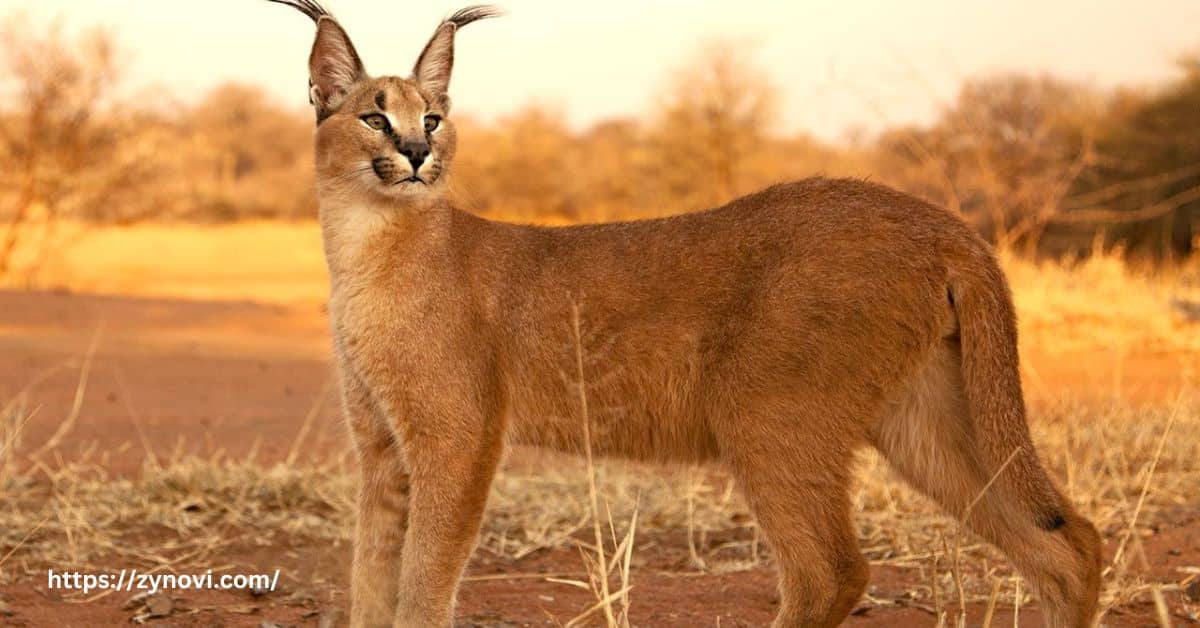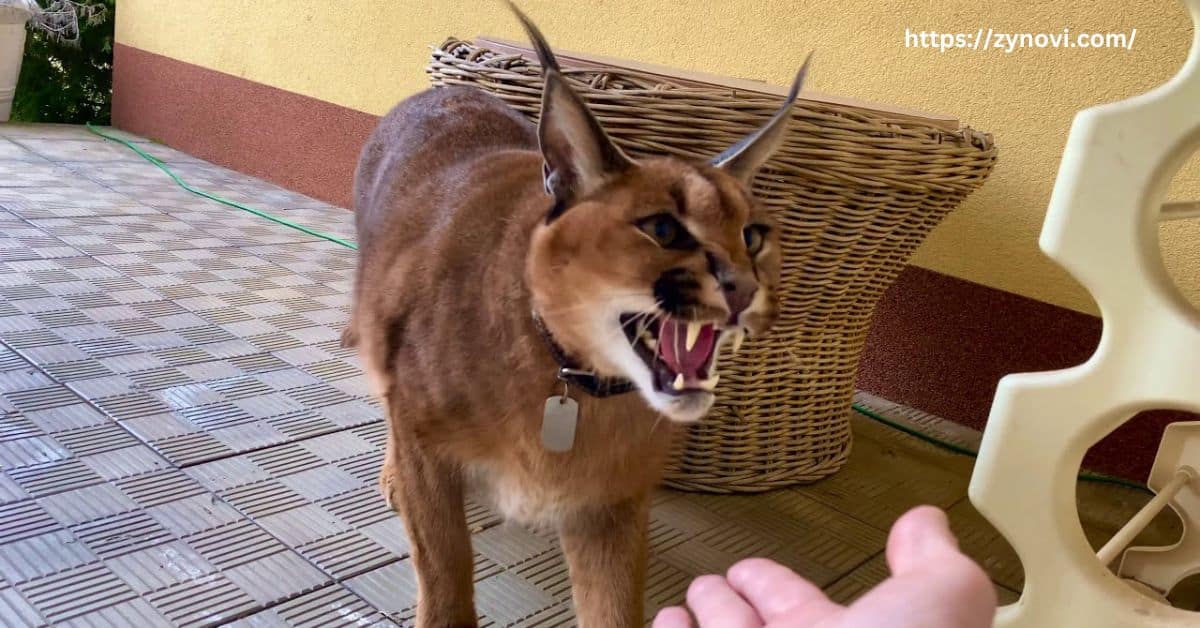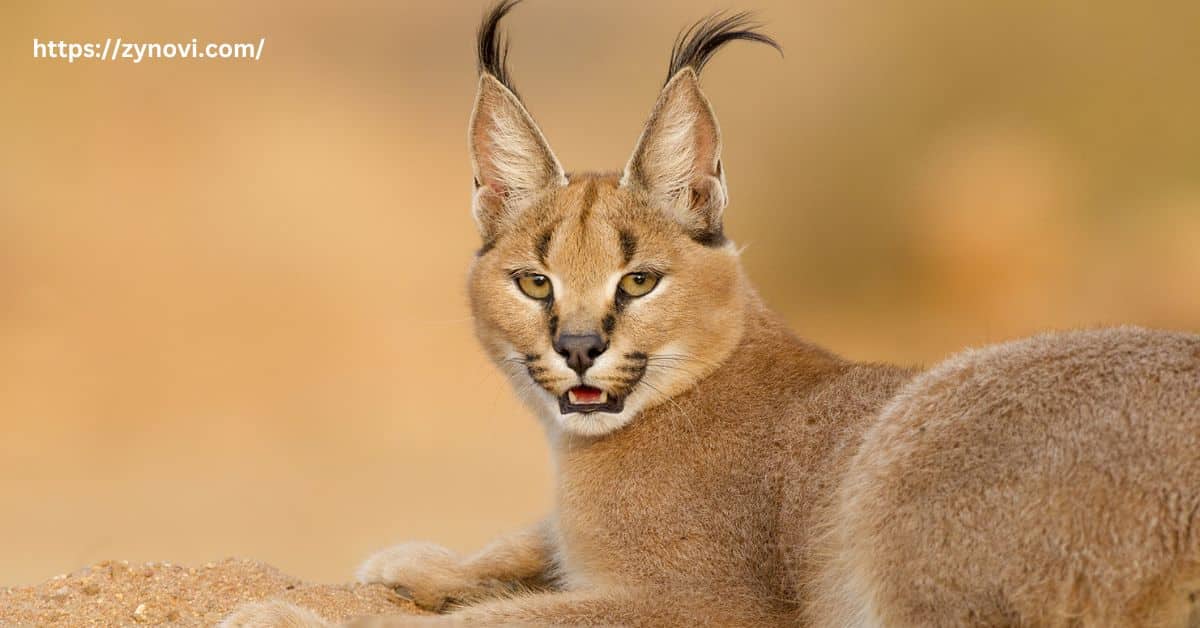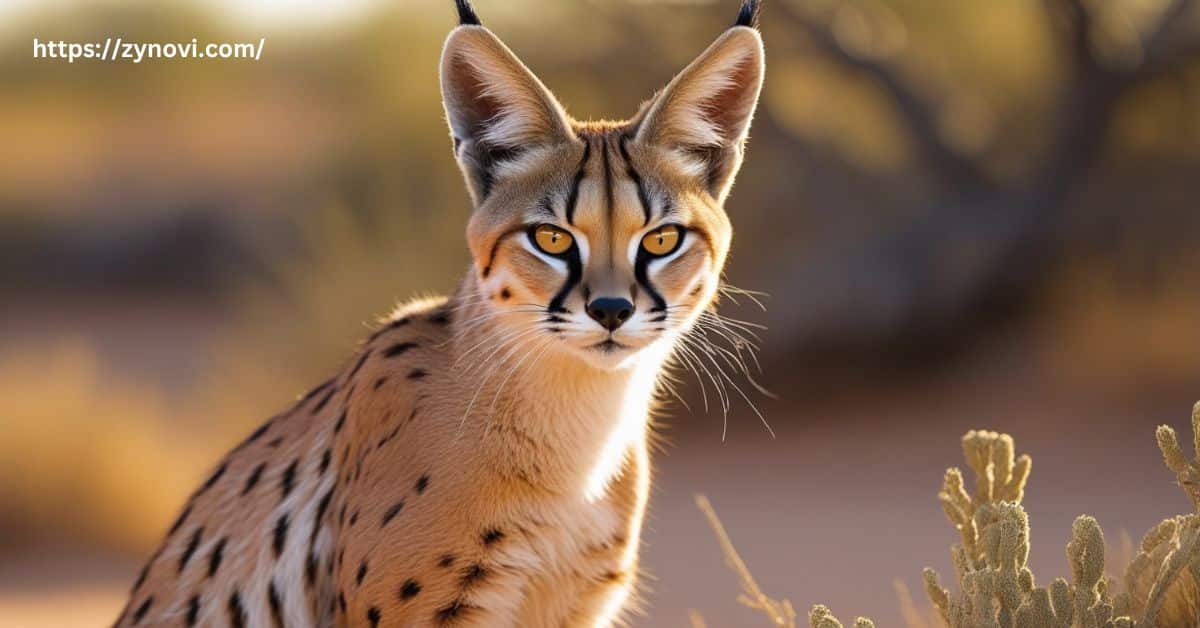Do Caracals Attack Humans? Caracals generally do not attack humans unless provoked or threatened, as they are shy and elusive by nature.
It’s a question that many people ask when they hear about these striking wild cats. With their tufted ears and sleek, muscular bodies, caracals are fascinating creatures. But what happens when they cross paths with humans? Are they dangerous, or do they prefer to keep their distance?
If you’re curious about the potential risks of encountering a caracal or wondering how to stay safe around these elusive predators, you’re in the right place. In this article, we’ll dive into the myths and facts surrounding caracal behavior, so you can understand these incredible animals better.
Who Is a Caracal?
The Caracal (Caracal caracal) is a medium-sized wild cat which belongs to the Felidae family. Caracals are often referred to as desert lynxes, though they are not true lynxes. The term “caracal” is derived from the Turkish word karakulak, meaning “black ear,” which is a reference to their distinctive, long, tufted ears.
Physical Characteristics
Here’s the information about the physical characteristics of caracals:
| Characteristic | Description |
|---|---|
| Size | Medium-sized, weighing between 20 to 40 pounds. |
| Ears | Long, tufted black ears, a distinctive feature. |
| Coat | Reddish-tan with dark spots, aiding in camouflage within their natural habitat. |
| Body Structure | Long limbs, muscular body, and sharp retractable claws. |
| Leaping Ability | Remarkable leaping ability, capable of jumping up to 10 feet in the air. |
| Hunting Ability | Skilled hunters targeting small mammals, birds, reptiles, and sometimes antelope. |
Habitat and Distribution
Native to regions across Africa, the Middle East, and parts of Central Asia, caracals are found in habitats ranging from savannas, scrub forests, and grasslands, to semi-deserts.
They thrive in environments with abundant small prey, and caracals prefer open spaces where they can hunt effectively.
However, urbanization and human encroachment have increasingly reduced their natural habitats, leading to more caracal sightings near urban settlements.
This can sometimes result in conflict with humans, but caracals are naturally elusive and shy animals that tend to avoid humans when possible.
Do Caracals Attack Humans?

When it comes to wild cats, the idea of human attacks often sparks fear and intrigue. However, understanding the actual nature of these animals is key to putting this fear into perspective. So, do caracals attack humans? The simple answer is no, but with some important nuances to consider.
Myths vs. Facts
Myth: Many myths surround the behavioral traits of caracals, particularly concerning their aggression toward humans. Some believe that these cats are inherently dangerous, but the truth is quite the opposite.
Fact: Caracals are not naturally aggressive towards humans. They are solitary animals that prefer to keep to themselves, avoiding human contact unless provoked. The notion that they actively seek out human encounters is a myth.
Are Caracals Naturally Aggressive?
Caracals, by nature, are not aggressive animals. They are primarily nocturnal hunters and tend to remain hidden during the day.
Their territorial nature and defensive behavior may cause them to become defensive if they feel threatened. However, this is more of a survival instinct rather than inherent aggression.
They are shy and elusive, avoiding human interaction whenever possible. Caracals do not attack humans out of malice or territorial motives.
Instead, any attack would most likely happen if the caracal feels cornered or in danger.
Provoked vs. Unprovoked Attacks
Understanding the difference between provoked and unprovoked attacks is crucial when discussing caracal aggression.
- Provoked Attacks: These occur when a caracal feels threatened or cornered. In the wild, humans may inadvertently provoke a caracal by approaching too closely, especially during the cat’s mating season or when it has young. Caracals are defensive creatures, and their instinct to protect themselves or their young may trigger an attack.
- Unprovoked Attacks: While unprovoked attacks by caracals on humans are extremely rare, they can happen in very unusual circumstances. A caracal might attack if it is feeling particularly vulnerable, such as when it’s injured, hungry, or has been affected by captivity stress.
In general, caracals are not known for attacking humans without reason. Most attacks, when they do occur, are due to provocation or mistaken identity rather than any inherent malice toward humans.
Rare and Historical Cases of Human Attacks
There have been a few rare incidents where caracals have attacked humans. However, these cases are extremely uncommon and typically occur when humans encroach on the caracal’s territory or attempt to handle the animal in ways that stress it out.
Historical records of caracal attacks are sparse, but any incident is usually tied to the unique circumstances surrounding the encounter.
In contrast, other wild cats such as lions or leopards have been known to attack humans more frequently, largely due to their larger size and more territorial behavior. The caracal, while capable of defending itself, poses significantly less of a threat to humans.
Understanding the Risks in Human-Wildlife Encounters
While human-wildlife interaction rarely leads to caracal attacks, certain risk factors can increase the likelihood of conflict.
- Urbanization: As caracals’ natural habitats shrink due to human encroachment, they are often forced to venture closer to human settlements in search of food. This can lead to more caracal-human conflicts, particularly when caracals scavenge in urban areas.
- Exotic Pet Trade: The demand for exotic pets has led to caracals being captured and sold in the pet trade. When caracals are kept as pets, their behavior can be unpredictable, and captivity stress may cause them to act aggressively.
- Livestock Predation: In some regions, caracals may hunt livestock, which can lead to conflicts with farmers. Although rare, when caracals are cornered by farmers protecting their animals, the cat may resort to defensive behavior.
- Captivity and Enclosure Stress: In wildlife sanctuaries or zoos, caracals may show aggression due to captivity stress. When housed in small, cramped enclosures, these wild cats experience stress, which can make them more prone to defensive aggression.
How to Avoid Caracal Encounters

The best way to avoid any conflict with a caracal is to respect its natural habitat and behave responsibly when encountering wildlife.
Best Practices in the Wild
If you are in an area where caracals are known to live, keep the following tips in mind:
- Stay a Safe Distance: Never approach or attempt to touch a wild caracal. Always keep your distance and avoid startling it.
- Respect their Territory: Caracals are territorial animals. If you spot a caracal, ensure you do not invade its space.
- Remain Calm and Quiet: Avoid sudden movements or loud noises that may startle the caracal, causing it to become defensive.
Safety Around Caracals in Captivity
Caracals in wildlife sanctuaries or zoos are typically not aggressive toward humans. However, it’s still important to exercise caution:
- Follow Guidelines: Always adhere to safety guidelines provided by the sanctuary or zoo staff. These protocols are designed to ensure both your safety and the well-being of the caracal, as wild animals, even in captivity, can react unpredictably.
- Observe from a Distance: Never attempt to touch or feed a caracal, as it can become stressed or defensive. Maintaining a safe distance allows you to appreciate these magnificent creatures without disturbing their natural behavior or creating unnecessary risk.
Caracals in Captivity: Human Safety Concerns

While caracals are majestic creatures, keeping them as pets or in captivity comes with serious ethical considerations and safety concerns.
Exotic Pet Trade
The exotic pet trade has led to the capture and sale of caracals for personal ownership. However, caracals are not domesticated animals and require specialized care.
Keeping a caracal as a pet can be dangerous for both the animal and the owner. These wild cats are accustomed to vast territories and will likely experience stress in confined spaces.
Possible Risks for Owners and Visitors
Owning a caracal poses significant risks due to their strength, agility, and sharp claws. Even playful interactions can result in injury, as they are not domesticated like dogs or cats.
There have been instances of caracals attacking owners or visitors, especially when they feel threatened or overstimulated. It’s important to remember that caracals are wild animals, and their instincts can lead to dangerous behavior in captivity.
Captivity Stress
Caracals in captivity are often subjected to enclosure stress, which can manifest as aggressive behavior.
In captivity, these animals lack the freedom they would have in the wild, and their territorial instincts can cause them to act unpredictably.
Final Verdict:
The overwhelming evidence points to the fact that caracals do not attack humans unless provoked. Their natural behavior is to avoid human interaction, and their territorial nature makes them cautious rather than aggressive.
However, as with any wild animal, human-wildlife interactions should always be approached with respect and caution. Caracals may attack in rare instances, especially when threatened or cornered, but this is not common behavior. Understanding caracal behavior, avoiding unnecessary provocation, and respecting their natural habitats can significantly reduce the risk of conflict.
FAQs
Are caracals aggressive towards humans?
Caracals are not naturally aggressive toward humans, but they can become defensive if threatened or overstimulated.
What is the bite force of a caracal?
A caracal’s bite force is estimated to be around 150 to 200 PSI, which is powerful enough to capture and kill prey.
How do caracals attack?
Caracals typically use their sharp claws and powerful jaws to strike swiftly, often attacking smaller animals like birds or mammals.
What is the problem with the caracal?
The main issue with caracals is human-wildlife conflict, particularly as their habitats shrink due to urbanization and poaching for the exotic pet trade.
Conclusion: Do Caracals Attack Humans?
In conclusion, caracals are not naturally aggressive toward humans. Their attacks typically occur only when they feel threatened or provoked. Caracals, like many wild animals, rely on their survival instincts, and aggression is usually a defensive response.
Understanding their behavior, respecting their space, and following proper safety guidelines can help minimize risks and promote peaceful coexistence. By avoiding human encroachment into their natural habitats and observing them from a safe distance, we can appreciate caracals as the powerful, elusive creatures they are without putting ourselves in harm’s way.










